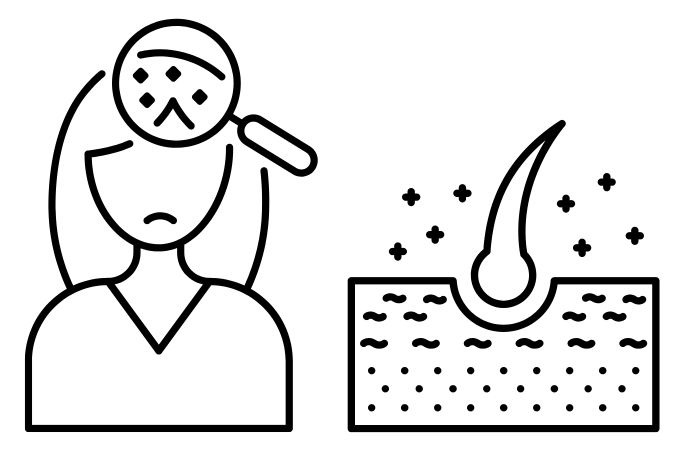
We have so much information at our fingertips with social media and as we all know, some is good quality reliable information and some, well some not so much.
Recently on social media there has been lots of talk about ‘mouldy hair’ or ‘hair mould’ and as a result in clinic we're encountering more people asking the questions, can I really get mouldy hair? Is my hair mouldy? What is hair mould?
The short answer is no, there is no evidence to suggest that you can get mouldy hair, and there is no such thing as hair mould. There are, however, conditions which mimic ‘mould’ on the scalp giving some explanation as to where the terminology has come from.
So, let’s deep dive into this topic and see what ‘hair mould’ is really all about.
We generally focus on the appearance of our hair when we think of what's happening at the top of our heads, forgetting that the scalp skin also needs a little TLC. Our scalp microbiome, which is a special part of the overall skin microbiome, consists of micro-organisms such as bacteria, viruses and fungi that inhabit the scalp. These organisms are essential elements in keeping our scalp skin healthy and protected but if they become unbalanced, for example from under/over cleaning or being kept damp/wet for long periods, then this dysregulation can result in dermatologic conditions including, dandruff, and seborrheic dermatitis and less commonly scalp psoriasis and folliculitis decalvans.
This time of year typically sees us having to use our hair dryers and heated styling appliances more due to the changes in the weather, drying our hair after washing helps to prevent the scalp being left wet for long periods in colder seasons and so helps the microbiome to remain stable. If we are air drying our hair, we run the risk of the scalp becoming unbalanced leading to an over production of yeast in some cases, (think damp condition loving bacteria – yep even on the scalp) which can result in fungal infections. This is where the link to ‘hair mould’ becomes apparent due to how the skin behaves and appears, typically red/inflamed with very dry or scaly patches and some discoloration of the shedding skin.

The most usual cause that is regarded as ‘hair mould’ is seborrheic dermatitis, which is a common, chronic, or relapsing form of eczema/dermatitis that mainly affects the sebaceous gland-rich regions of the scalp, face and chest. On the scalp specifically seborrheic dermatitis presents from dandruff, in its milder form, to an itchy flaky rash in its advanced form. Treatment for the condition ranges from medicated shampoos to anti-fungal creams and steroids, depending on the severity and presentation of the condition.
Another symptom popping up on the topic of hair mould is the odour some people encounter with their hair, even when freshly washed. This again is similar to the ‘damp’ smell that emits from a room affected by mould but the smell from a scalp is the result of an untreated yeast infection and the buildup of bad bacteria rather than mould. Treatment for this is again a medicated shampoo and over the counter anti-fungal cream.
So, we’ve established what hair mould really is, now how can we avoid these conditions? Firstly, we need to avoid leaving the hair, and consequently the scalp, wet for long periods. If you are a practicing ‘air dryer’ then consider washing your hair when you are in a warm environment to facilitate a quicker drying time. Avoid going to bed with wet hair and ensure that the scalp is washed regularly to allow for a healthy scalp biome to do its job, keeping the scalp skin balanced.
The early winter months usually result in increased presentation of scalp conditions, due to the cooler, damper weather and the constant change from warm indoor environments to cooler outdoor temperatures and our bodies natural ways of adjusting to those.
If you are unsure of whether your scalp needs a little TLC then get in touch with us here.





